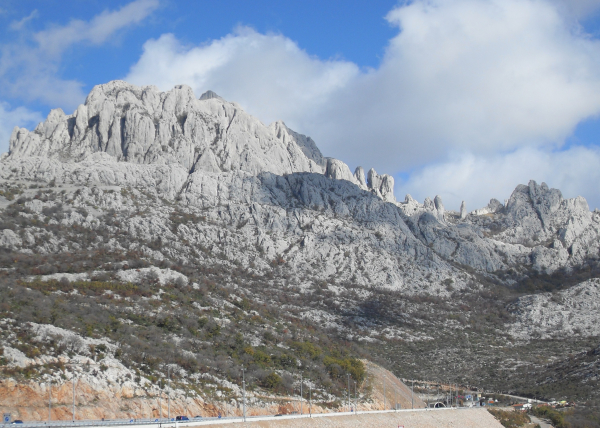 today 133
today 133
To ensure the high snow clearance capacity and the high clearance speed, the drive and the hydraulic components of the main vehicle have been enhanced.
Croatia’s track network is around 3,000 km long. This well-developed rail infrastructure runs through the Dinaric Alps – one of the highest mountain chains in Europe. Due to the climatic conditions between the Adriatic coast and the mountains, the railway lines have to cope with large quantities of wet and heavy snow.
To ensure a more efficient snow clearing on its network, the Croatian state railway decided to add powerful machines to its fleet of snow clearing vehicles. The machines are operated by HŽ INFRASTRUKTURA (HŽ Infrastructure Ltd for the management, maintenance and construction of the railway infrastructure).

The Dinaric Alps (or Dinarides) extend for 600 kilometres along the east coast of the Adriatic Sea from the Julian Alps in northeastern Italy and Slovenia, through northwestern Croatia to the south to north Albania. Canyons, deep river valleys, and mountain chains, running crosswise to the track, are main obstacles for the traffic.
Trains must travel 1,000 metres high passes and high karsts. Precipitation falls mostly in the cold season, causing vast quantities of snow and snow covers until late spring. In the winter season, this obstructs or even interrupts traffic.
* Based on https://de.wikipedia.org/wiki/...
Image source: © Ekem, Wikimedia Commons (CC BY-SA 3.0)
Two new OBW 100 track motor vehicles form the basis of the snow clearing vehicles. Our powerful tractive vehicles have been fitted with high-capacity snow blowers, snow ploughs and track clearing ploughs. The enormous snow clearance capacity at high clearing speeds makes it possible to clear the track speedily and efficiently.
The hydrostatically powered front snow blower is fitted with two scoop wheels working in opposite direction. By extending the front halves, the excavating width can be expanded from 3,000 mm to up to 6,000 mm. Each scoop wheel housing is fitted with a tangential stack ejecting the snow to a distance of up to 40 m. The clearance output is 3,500 t per hour. Even under the most difficult conditions, the OBW 100.256 S enables the track to be cleared in one pass, ensuring unhindered rail traffic at all times.
When there is light snowfall, a snow plough at the other end of the carrier vehicle ensures clear tracks. The variable snow plough has two blades. It can be used both as a wedge-shaped plough with snow ejected to both sides and as a single snow plough with snow ejected to one side only.
Track clearing ploughs for efficient snow clearance between the rails add to the machines’ snow clearing equipment. A turntable for changing the machine’s direction of travel is located between the two bogies in the centre of the machine. It allows the machine to be lifted off the track at the end of the work site or the shift. Using a cogwheel system, the machine is turned hydraulically.
To ensure the high snow clearance capacity and the high clearance speed, the drive and the hydraulic components of the main vehicle have been enhanced. The hydrostatic drive for transfer travel and work travel acts on all axles of the two bogies. The cabin insulation and heating as well as the work units and the engine have been designed to meet the harsh weather conditions in winter (up to -30 degrees).
The two new snow clearing vehicles are stationed in Ogulin, the central hub between the line to the north-east (Zagreb) and the mountain lines to the south of Croatia and the west to Rijeka.
As early as in spring, a universal track motor vehicle for transporting persons and material has been supplied to Zagreb. The OBW 10 Sprinter carries out valuable work in the background – providing support in many maintenance tasks.
Its design is based on the well-proven OBW 10 series. The machine has been adapted to meet common European standards and emission regulations. The machine can transport up to 10 persons (including two drivers’ seats). An integrated loading platform of around 12 m² allows for material transports. The hydraulically operated heavy-load crane can be equipped with different gripping devices.